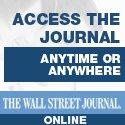The Basic document in any estate plan is the will. Once that is in place, a thorough review should be made of your assets and liabilities in order to maximize estate value, particularly with regard to taxation. Often there are opportunities to reduce taxes and fees pertaining to estate settlement and distribution. For example, steps can be taken to not only increase the value of a Canadian controlled private corporation (CCPC) but to access dividends tax free. How is this possible, you may wonder? Well, it is through the purchase of a life insurance policy. Now many people will react with “I don’t need life insurance” or “I’m too old to qualify and even if I do qualify it will be too expensive.” This type of planning occurs many times every year in Canada and is very effective in reducing taxes and fees.
Let’s review a transaction put in place a few years ago.
Family Situation
Mr. Smith was planning on retiring in a couple of years. He was in his very early 60s and had managed to accumulate a fairly large, diversified estate. He and his wife wanted to be sure to leave a reasonable estate to their two children and also wanted to be sure they were well provided for in later years. Their sizable RRSPs and real estate holdings would easily accomplish the latter. They also jointly owned a “Holding Company (Holdco)” with about $400,000 in conservative investments. Passive income in their private corporation was being taxed at nearly 50%. They had not paid themselves any dividends for many years. At the time, the highest marginal dividend tax rate was about 32%.
Action Taken
*Mr. and Mrs. Smith’s Holdco purchased a joint last-to-die permanent life insurance policy, based on the lives of the two owners, Mr. and Mrs. Smith.
*Face Amount: $1,500,000
*Total Premium to fully pay: $230,000 (Premiums were paid over 3 years by the Holdco)
With the Holdco paying the premiums, there was no money directly taken out of the Smiths’ pockets. After the death of the second spouse, the death benefit would flow into the Holdco into the notional, capital dividend account. According to Canadian tax law, death benefits may be “placed” into the capital dividend account and paid out tax free.
Benefits
*Mr. and Mrs. Smith moved taxable assets into a tax-sheltered life policy
(One of the reasons the premium was only $230,000 was that earnings within the life insurance policy are not taxable) Remember Holdco investment income was being taxed at nearly 50%.
*The value of the Holdco increased immediately (should the Smiths die) to a minimum value of $1,500,000
*The two children (as the new owners of the Holdco on the second death) could pay themselves a minimum $1,500,000 tax free, far greater than what a taxable investment of $230,000 could provide.
As you can see from the foregoing, determining the usefulness of this transaction requires the advice of an accountant and a life insurance expert. This is a very brief overview but suffice it to say that if you are in a similar situation to the Smiths, you should consider the positives and negatives of what Manulife Financial calls “The Corporate Estate Bond.”
Now, that you know what a “Corporate Estate Bond” is, do you see the value in this product? Would you consider taking advantage of this product?








